
Arquivo para a ‘Sem categoria’ Categoria
O futuro e diálogos pouco abertos
A ideia que estamos próximos a uma grande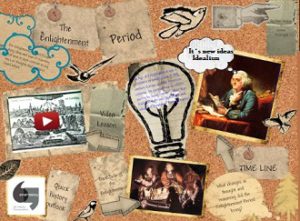 mudança está na boca de muitos apocalípticos e de alguns teóricos e até filósofos idealistas, embora a maioria reivindique abertura e diálogo, o que pensam sobre ele não é elaborado, fazem longos discursos e tecem narrativas irreais, porém querem ouvir a própria voz.
mudança está na boca de muitos apocalípticos e de alguns teóricos e até filósofos idealistas, embora a maioria reivindique abertura e diálogo, o que pensam sobre ele não é elaborado, fazem longos discursos e tecem narrativas irreais, porém querem ouvir a própria voz.
O verdadeiro diálogo entre tradição e mudança, felizmente há neste campo muita gente fazendo isto de modo apropriado, deve propiciar ao mesmo tempo uma releitura do passado, um respeito e a compreensão do porque dos fatos aconteceram desta ou daquela forma.
Esta é a leitura desde os pré-socráticos, passando pela alta e baixa idade média, o renascimento e o iluminismo, embora cada período se possa fazer a crítica, e até ela deve ser bem feita, é fácil fazer a releitura crítica porque este tempo passou e difícil deste tempo, porque ele chegou.
Difícil principalmente do iluminismo e da modernidade, a pós-modernidade ou ainda a tardia, ou sua continuidade, ainda tem difícil leitura porque a transição não se realizou e o problema que se coloca é a dificuldade de ultrapassá-la, quase todos concordarão que a modernidade já é mais tradição do que qualquer possibilidade de uma nova “revolução” dentro do seu pensamento, embora as tentativas sejam muitas.
Nietzsche chamava este dilema de “eterno retorno”, ele já percebia em seu tempo e há quem ache que isto é novo, e em parte tinha razão pelo horizonte que via no seu tempo, mas quando o novo não nasce o pensamento tradicional padece de envelhecimento e de mesmice.
Tenta-se dar-se um ar “novo”, ou “criativo”, mas não há nada que realmente mude a realidade.
Grandes problemas socioculturais de nosso tempo, morais e até religiosos não se mudarão sem uma perspectiva nova, embora redundante dir-se-ia um “novo” novíssimo, e para que de fato não seja pura imaginação, deve-se encontrar elementos já vivos que apontam o futuro.
Três elementos novos são visíveis: um planeta mundializado, é já possível ver-se como mundo embora ainda não se respeitem culturais diferentes, um esgotamento das forças da natureza, o domínio da natureza pelo homem foi o grande modo da modernidade, e o fim da fome e da miséria no planeta, embora com recursos disponíveis para tal, não se realizou.
Claro que há muitos outros fatores, mas eles são decorrentes da falta de diálogo com o futuro, a centralização de grupos autocráticos, a ausência de uma política e cultura em rede, embora os mecanismos para isto existam, são combatidas como “alienação” e até como responsáveis por problema que existem muito antes de qualquer pensamento sobre as novas tecnologias.
As novas gerações sabem o que é novo, alguns “velhos” tentam retomar o “protagonismo”.
Morte aparente do pensamento
Se há uma esfera além da pura antropologia e do cientificismo darwinista não está apenas no pensamento religioso, mas também no pensamento que vai além do humano, este pensamento embora em crise, está presente na filosofia contemporânea.
darwinista não está apenas no pensamento religioso, mas também no pensamento que vai além do humano, este pensamento embora em crise, está presente na filosofia contemporânea.
Peter Sloterdijk escreveu A morte aparente do pensar: sobre a filosofia e a ciência como uma vida de exercícios, seu tema geral sobre a sociedade contemporânea como “uma vida de exercícios”.
O livro é o resultado de várias palestras proferidas em 2009 chamada de Palestras “unseld”, no Fórum Scientiarum da Universidade de Tübingen cujo tema era “A antropologia nas discussões da ciência”, e o autor propõe duas formas de antropotécnica, a de curto alcance (Tens de mudar sua via) e uma de longo alcance chamada Selbstverbesserung (aprimoramento do sim).
Há uma releitura de Kant e Cassirer devido a um excesso ontológico, que compensa o “déficit biológico”, explico melhor, o ser que procura transcender a uma realidade biológica deficiente, de tal forma que o seu “exercício de vida” geral novos problemas, teorias filosóficas e científicas.
Vendo que a exposição e práticas na história usual das ideias tornaram possível a existência de uma improvável ciência e filosofia, ele elabora uma genealogia do “homo teórico”, o “puro observador”.
Analisa as condições que surge no Ocidente a atitude teórica em geral, e a ciência em particular, onde vê o que ele denominará “o assassinato de um morto aparente” (p. 14), ampliará a noção husserliana do epoché, colocar entre parêntesis toda exterioridade e juízo, e amplia este conceito.
O método genealógico proposto capaz de reelaborar a origem do produto das ciências, implica o que Nietzsche adotou como atitude de suspeita: “Será que o homo teórico realmente vem de um berço tão alto quanto ele garante-se desde os primeiros dias? Ou é melhor um bastardo que quer impressionar com títulos falsos? ” (p.57), a provocação tem um caminho anterior já trilhado.
Ira e Tempo (2006), refere-se ao produto do fracasso no espaço da polís), psicológico (para uma disposição psíquica de se distanciar do meio), sociológica (por uma pedagogia de formação do indivíduo) e meio-teórico (o resultado de uma cultura escrita que predispõe a distância de um texto, que por sua vez mantém a distância do tempo da vida.
Todo este arcabouço e para dizer que estamos diante de dilemas extremamente duros para o homem, para o pensamento e para o próprio processo civilizatória, é além e aquém da pandemia, a irrupção do real em Marx e nos neohegelianos, o perspectivismo nietzschiano, a consciência de classe em Lukács, a trajetória de Heidegger, a revolução ética nas ciências naturais depois de Hiroshima e Nagasaki, o compromisso existencialista, o conhecimento em Scheler, Kuhn e Foucault, a desmistificação do isolamento em pesquisa científica de Latour e CTS (Ciência, tecnologia e Sociedade) (pags. 121-129).
SLOTERDIJK, P. Muerte aparente en el pensar. Sobre la filosofía y la ciencia como ejercicio. Siruela. Barcelona, 2013.
As meditações cartesianas e a fenomenologia
Um pequeno livro de Edmund Husserl, que foi uma compilação de uma conferência em Paris, foi o opúsculo Meditações Cartesianas, onde faz cinco aportes e é a partir daí que dá origem a uma formulação consistente da fenomenologia.
conferência em Paris, foi o opúsculo Meditações Cartesianas, onde faz cinco aportes e é a partir daí que dá origem a uma formulação consistente da fenomenologia.
O caminho de um Ego Transcendental, diferente da transcendência idealista em direção ao objeto, é uma direção ao Outro, ou outros eu´s, uma superação do estatuto do transcendente ligado ao objeto, assim descreve Husserl: “…. imediatamente se torna patente que o alcance de uma tal teoria é muito maior do que parece à primeira vista, dado que ela também conjuntamente funda uma teoria transcendental do mundo objetivo …” (HUSSERL, 2010, p. 134).
Ao admitir e se relacionar com a subjetividade alheia (um outro alter ego) tanto os objetos da cultura como o mundo compartilhado, cria uma intersubjetividade (HUSSERL, 2010, p. 134-35), agora do fenômeno transcendental “mundo” é retirada uma camada de sentido que possa ser remetida à constituição intersubjetiva.
A crítica da experiência feita por Husserl no início das Meditações, leva a primazia da experiência Imanente (apodítica do cogito, preso a lógica) enquanto a experiência transcendente (o mundo exterior e os outros incluídos) não se reduzindo a experiência transcendental em direção ao objeto.
Husserl usa também o conceito de solipsismo que é a ideia que que só existe o ato de pensar e o próprio eu, veja que neste raciocínio a própria existência do objeto é postar em dúvida o que é resolvido pela experiência, neste caso há um solipsismo gnosiológico onde os outros entes (seres humanos e objetos) só existem na mente e não na consciência.
A doutrina fenomenológica fundamenta-se que o mundo objetivo da ciência está voltado a experiência e no pensamento pré-reflexivo e pré-científico porque está ligado a subjetividade, para modificar esta relação de ser no mundo, incorporando o mundo da vida (Lebenswelt) de onde surge a necessidade de uma antropologia filosófica e uma epistemologia que responda estas a este desafio.
Como consequência deste pensamento surgiu a ontologia fenomenológica como uma possibilidade clara no próprio projeto de Husserl, embora não tenha aprovado num primeiro momento o trabalho de Heidegger.
Outra possibilidade de uma hermenêutica filosófica como foi elaborada por Hans-Georg Gadamer também estava ali desenhada e o círculo hermenêutico já estava em projeto no pensamento de Heidegger.
HUSSERL, E. Meditações cartesianas e conferências de Paris. Tradução de P. M. S. Alves. Lisboa: Centro de Filosofia da Universidade de Lisboa, 2010.
O esgotamento do humanismo e co-imunidade
Quando Peter Sloterdijk proferiu sua palestra “regras para o parque humano”  em 17 de julho de 1999 num colóquio dedicado a Heidegger e Lévinas, no castelo de Elmau na Baviera, apesar de ter na platéia Teólogos a reação maior foi dos meios de comunicação, ao afirmar o surgimento de uma “antropotécnica” e manipulações genéticas, os ecos foram ouvidos na França e também no Brasil onde foi publicada uma reportagem no Caderno Mais da Folha de São Paulo.
em 17 de julho de 1999 num colóquio dedicado a Heidegger e Lévinas, no castelo de Elmau na Baviera, apesar de ter na platéia Teólogos a reação maior foi dos meios de comunicação, ao afirmar o surgimento de uma “antropotécnica” e manipulações genéticas, os ecos foram ouvidos na França e também no Brasil onde foi publicada uma reportagem no Caderno Mais da Folha de São Paulo.
O que o filósofo alerta, em sua linguagem rica em metáforas para tornar sua intrincada filosofia mais clara, afirmava que o trabalho de domesticação humana havia fracassado, em resumo, esta era sua resposta à Carta sobre o Humanismo de Heidegger, e a sua palestra se tornaria um livro de grande repercussão.
Depois vieram outras polêmicas, sobre a ecologia por exemplo, afirmou que “oscilaremos entre um estado de desperdício maníaco e de parcimônia depressiva”, em palestra intitulada “sobre a fúria de titãs no século 21” ou seja, entre duas forças opostas: o minimalismo e o maximalismo, o que chama de frivolidade de nossos atos.
Falou também na referida palestra, sobre a decadência do conceito da ética: “antigamente … vinha de um sentimento de obrigação, de virtude. A responsabilidade só se torna uma categoria importante quando as pessoas fazem coisas cujas consequências não conseguem controlar” e alerta que o termo responsabilidade é novo em filosofia, também nas ciências humanas.
Em resposta em uma entrevista ao jornal El País, o filósofo criador do conceito de co-imunidade, afirmou que a situação atual exigirá “a necessidade de uma prática mais profunda do mutualismo, ou seja, a proteção mútua generalizada, como digo em Você Tem que Mudar a Sua Vida”, livro sem tradução para o português.
Além desta necessidade, o que o conjunto da situação atual que revela um desequilíbrio global da natureza ao social, indica que fatores externos e inorgânicos (de alguma forma a natureza vai reagir) poderá acelerar o processo de mutualismo, como o vírus nos fez repensar a imunidade, talvez algum efeito aórgico poderá acontecer.
O humanismo está preso a frivolidade do pensamento idealista.
João Damasceno e a pericorese
Mesmo aos que não creem o conceito de pericorese é importante porque torna a ideia de relação algo mais substancial, embora já se admita que o homem é um ser relacional, a relação está cheia de dualismos e interpretações não trinitárias (no caso dos cristãos) e pode levar a indiferença.
pericorese é importante porque torna a ideia de relação algo mais substancial, embora já se admita que o homem é um ser relacional, a relação está cheia de dualismos e interpretações não trinitárias (no caso dos cristãos) e pode levar a indiferença.
Depois de resolvido o dogma trinitário pelos padres capadócios, que explicaram que Deus é Uno e Trino, são pessoas (hipóstase) e mantem a unidade (ousia), Damasceno vai se debruçar sobre a relação entre as três pessoas e cria um termo usado também na filosofia: pericorese, a interpenetração nas relações, isto é a possibilidade de ouvir o Outro não apenas por respeito, que já seria um passo, mas tentando penetrar e entender as razões de seu pensamento.
Foi João Damasceno (675-749) ou de Damasco foi um padre Sirio, que estudo direito e musica e na teologia estudou relação de pericorese ou a relação trinitária, o termo emerge propondo a articulação entre a unidade e a comunhão na Trindade, parece simples dizer isto, mas difícil de entender e praticar, pois a maioria das relações excluem o Outro que é diferente, seja ele de cor, raça, credo ou cultura, muito a frente do seu tempo João Damasceno era amigo dos sarracenos, mas tarde a igreja católica o tornou santo.
No seu percurso teológico histórico procurou buscar algo que explicasse a relação, que estive de acordo com aquilo que as escrituras diziam de Deus e sua relevância na história: a articulação entre o conceito de Deus que é trino e uno, mas sendo cada um, uma pessoa singular (prosopon) e Deus, João estruturou a via intra-trinitária, a partir do conceito grego de pessoa: hipóstase.
Na palavra grega significa hypo, o que é sub, debaixo, e stasis, o que está sub-posto, como se fosse um suporte, porém como relação divina este conceito devia ser ampliado e explicado.
O termo pericorese emerge nesta Teologia Patrística, como a articulação entre unidade e comunhão da Trindade, mas indo além, assim o Pai é uno no Filho e o Filho uno no Pai, e ambos unos no Espírito Santo, assim há uma interprenetração, é mais que pura relação, é Ser no Outro.
O problema de algumas interpretações religiosas é a relação estática dos três, que é a relação dualista que vem da filosofia idealista, onde sujeito e objeto estão separados e são relacionais por um tipo de transcendência, que na verdade nada tem a ver com o mistério Divino nem é religiosa.
O mistério divino tem a ver com o período Pascal, morte e ressurreição numa relação trinitária, na filosofia há algo semelhante que é a epoché, a suspensão de conceitos (ou juízos religiosos) porém colocados entre parênteses, gera assim uma abertura que permite a relação, e como resultado que cada pessoa é compreendida, ela não perde sua identidade e é capaz de entender o Outro.
Numa ascese espiritual mais profunda é o esforço de entender e amar o Outro que é diferente, que não é meu espelho, não tem os meus conceitos e juízos, não classifica o mundo como eu, a grande tragédia de nossos dias é a falta de pericorese, e assim de relações trinitárias.
Penso que a pandemia nos mostra isto, mesmo tendo uma grande dor que mata a todos e que sensibiliza muita gente, que abre o coração para olhar o sofrimento do outro, há aqueles que se fecham em grupos, ideias e esquemas para não olhar a dor, a fome e o desespero que a pandemia gerou, ou acordamos juntos ou perecemos juntos, ficar na nossa trincheira é não relacional.
LockDown e frivolidade
Enquanto o vírus se expande e começa a chegar mais no interior do Brasil e em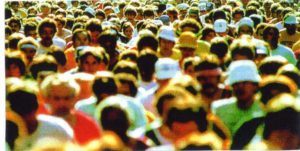 muitos lugares a vida continua “normal”, enquanto a Europa tenta aos poucos voltar a nova normalidade, isto é, voltar ao comércio e o consumismo e a vida agitada anterior, que Sloterdijk chama de frivolidade (El país).
muitos lugares a vida continua “normal”, enquanto a Europa tenta aos poucos voltar a nova normalidade, isto é, voltar ao comércio e o consumismo e a vida agitada anterior, que Sloterdijk chama de frivolidade (El país).
São dois cenários, o caso brasileiro enquanto alguns apostam que a curva chegou no platô, os novos dados apontam para uma expansão ainda maior do vírus, apostar que podemos conter a grave situação pandêmica com medidas pouco radicais vai se mostrando ineficiente.
A razão da pressão para abertura do comércio, mais que econômica, é claro que ela atinge a economia de todo o planeta, o motivo real na cabeça de muitas pessoas é voltar ao dia a dia de um elevado stress, de correria e de consumismo para aqueles que dispõe de recursos para isto.
Atingimos, no Brasil, o patamar de 10 mil mortes, tanto na vida pessoal quanto na vida social, se chegamos a uma gravidade de uma doença ou tomamos medidas radicais ou assistimos ao total agravamento da doença, no caso social, a expansão virótica e o agravamento da pandemia.
Na reflexão de Sloterdijk, que escreveu ao meu ver, dois livros emblemáticos Esferas e Crítica da Razão Cínica, ele apresenta dois conceitos-chave que são a coimunidade e a antropotécnica.
O primeiro conceito de coimunidade significa que podemos estabelecer um compromisso individual voltado à proteção mútua, que marcaria uma nova maneira mundial de enfrentar os problemas e o conceito de antropotécnica significa entender que as técnicas, neste caso e é o principal conceito usado por Sloterdijk, a biotecnologia, ou seja, o que inclui a manipulação genética.
Quando lançado gerou muita polêmica na Europa, devido a manipulação de genes por exemplo, porém agora que as principais pesquisas de defesa do coronavirus mostram a importância do uso de anticorpos para a produção da vacina, e a primeira coisa foi a foi a sequenciação genética.
O agravamento da crise brasileira exigirá um confinamento mais sério, ou veremos os números extrapolarem e o Sistema de Saúde já praticamente esgotado.
O confinamento é necessário e a volta a frivolidade deve ser repensada como forma não apenas de evitar uma crise econômica maior, mas principalmente a distribuição de bens mais justa.
A importância do legado de Droysen
Afirmamos na semana anterior (ver o post) que tanto a perspectiva do helenismo de Droysen (ele cunhou o termo) quanto a perspectiva do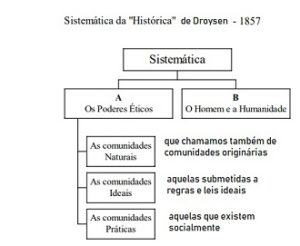 verdadeiro significado da história sua eram mais amplas, muito antes das críticas de Gadamer ao historicismo “romântico”, este autor que foi aluno de Hegel, já o tinha feito e com muita propriedade pois além de aluno, penetrou neste conceito do qual Hegel é fundador na filosofia moderna.
verdadeiro significado da história sua eram mais amplas, muito antes das críticas de Gadamer ao historicismo “romântico”, este autor que foi aluno de Hegel, já o tinha feito e com muita propriedade pois além de aluno, penetrou neste conceito do qual Hegel é fundador na filosofia moderna.
Johann Gustav Droysen (1808-1884) questionava o princípio da historicidade, e, muito antes do seu tempo questionou os historiadores sobre os fundamentos “científicos” de um certo perspectivismo e relativismo, assim como também indiretamente questionava Dilthey na tentativa de usar a história para fundamentar as Ciências do Espírito.
Droysen em seu Compêndio sobre a História (Grundriss der Historik) que não era adequado à História, tendo esta a pretensão de ser ciência, tomar seu método emprestado de outra perspectiva do conhecimento, que é a ciência natural, mesmo que como “exemplo”.
A solução por ele apresentada, parecida a de Gadamer, sintetizável na noção metodológica de Compreensão Investigativa (forschendes Verstehen), visava dar a História a possibilidade de uma ciência autônoma, assim para ele existe algo que precede ao dualismo explicação x compreensão, que é a história, o que chamamos na semana passada de “forma” do pensar.
A sua obra Compêndio da Historia (Grundiss der Historik) de 1857/1858 está disponível em versão espanhola (1983) e versão italiana (1989), ainda ser versão em português.
É de interesse particular, pelo menos o foi para mim, o capítulo 3 que trata do problema hermenêutico da compreensão, que dá uma noção da aplicabilidade do seu método.
A ligação que podemos e devemos fazer com a questão moral, do tópico anterior, pode ser encontrada na página 386 de seu trabalho Teologia dela Storia (tradução italiana):
“… nós temos a necessidade de um Kant, que examinasse criticamente não a matéria histórica, mas o movimento teórico e prático diante e no interior da história, e que demonstrasse, a exemplo de qualquer coisa análoga a lei moral, um imperativo categoria da história, a fonte viva da qual jorra a vida histórica da humanidade. ” (DROYSEN, 1966, p. 386).
Droysen observa naquilo que chama de “Sistemática” três tipos de comunidades éticas: “as comunidades naturais”, “as comunidades ideais” e “as comunidades práticas” (figura acima), e a elas relaciona da história, dito assim: “a nossa sistemática resultou da noção de que o mundo história é o mundo ético, mas enquanto concebido sob um determinado ponto de vista; porque o mundo ético pode ser considerado sob outros pontos de visa …” (Droysen, 1994, p. 413).
O seu devir, portanto, está longe da dialética hegeliana, mas ao mesmo tempo dialoga com ela.
DROYSEN, J. G. Teologia dela Storia. Prefazione ala Storia dell´Ellenismo II – 1843. In: Istorica. Lezioni sula Encilopedia e Metodologia dela storia. Trad.: I. Milano – Napoli: Emery, 1966.
_______. Istorica. Lezioni di enciclopédia e metodologia dela storia. Trad. Silvia Caianiello. Napoli: Guida, 1994.
Tradição e inovação tem alguma relação ?
No âmbito cultural imagina-se muitas vezes que não, ou estabelece inovação apenas no âmbito estrito da cultura, enquanto ela tem relação com as crenças, valores, e principalmente com as formas de relações sociais que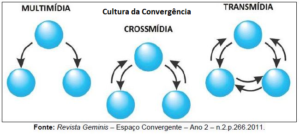 envolvem a produção de riquezas, o uso de técnicas, por exemplo, a passagem da cultura oral para a escrita, significou uma mudança profunda.
envolvem a produção de riquezas, o uso de técnicas, por exemplo, a passagem da cultura oral para a escrita, significou uma mudança profunda.
Inovação está ligada a alguma mudança cultural significativa, em geral, com influência de novas técnicas e modos de produção para consumo, mas o termo é mais amplo.
A mudança hoje é das mídias para as transmídias, isto é, as mídias se complementam pode-se fazer um vídeo a partir de um texto ou de uma exposição oral de determinada cultura, assim pode-se falar de narrativa de transmidia, ou de “storytelling”, ou seja, contar estórias.
O termo foi utilizado pela primeira vez pelo professor Marsha Kinder, da Universidade de Sourthern California (EUA), em 1991, mas em 2003 o professor Henry Jenkins criou uma definição que ficou consagrada em seu livro “Cultura da Convergência”, onde definiu-a como: “[…] uma nova estética que surgiu em resposta à convergência das mídias”.
Ao remeter a estética o termo, este ultrapassa a pura produção de produtos de consumo para atingir a arte, a cultura e de certa forma o sistema de crenças como um todo, mesmo que a rejeição em diversos âmbitos seja comum, o processo de “inovação” avança.
Também há uma redefinição de storytelling, a tradição da cultura oral de contar estórias, onde a tradição se perpetua muda para uma nova forma, agora torna-se o uso de recursos audiovisuais para transmitir uma história, que pode ser contada de improviso (como na tradição oral), mas pode também ser trabalhada e enriquecida com recursos visuais.
JENKINS, Henry. Convergence Culture: Where Old and New Media Collide. NY: New York University Press, 2006.
Phronesis e serenidade
Não por acaso Gadamer adota a Phronesis como um dos elementos chave em seu  discurso sobre Verdade e Método, incompletamente traduzida como prudência, o termo na verdade dever-se-ia ser confundido com “sabedoria” prática da serenidade, tradução livre.
discurso sobre Verdade e Método, incompletamente traduzida como prudência, o termo na verdade dever-se-ia ser confundido com “sabedoria” prática da serenidade, tradução livre.
Isto porque a nosso ver, Gadamer é reabilitador da filosofia prática, os que clamam por pratica, objetividade (sic! bem idealista), são pouco práticos por ausência de sabedoria, são impulsivos e activos (no sentido de vita activa de Chul-Han), típicos da sociedade do cansaço.
No sentido grego, está agregada a ética, mas não é um saber privado no sentido da moral e sim público e social, que visa minimizar exacerbações da impulsividade egocêntrica do eu, quando colocada numa perspectiva da obra de arte atinge um patamar de princípio universal.
Esta inclui a obra de arte porque foi a excessiva centralização no eu que reduziu a relação da ética com a estética, a amoralidade pública, o escrachado não é uma nova estética, nem mesmo a negatividade as vezes necessária a arte, é a sua ausência por falta de relação com a ética e o processo formativo.
Gadamer recupera a phronesis a partir da proposta de Aristóteles na Ética a Nicômaco, onde busca estabelecer a articulação entre o universal e o particular, mais ainda entre o indivíduo e a sociedade, dentro de formas históricas da vida, mas com um ethos comum.
Pode-se assim estabelecer uma relação com a educação, num momento que se fala em escola sem partido é preciso pensar que há um outro, sem desejar a neutralidade porque ela será uma ilusão, exploramos num post a seguir.
Falta estabelecer a relação da phonesis com a techné e a episteme, que é o saber teórico e o saber fazer da techné, que está ligada etimologicamente a arte (τέχνη) e ao artesanato.
A harmonia entre as três formas de sabedoria resulta numa sabedoria prática, a práxis.
O dasein e a razão
Antes de penetrar no conceito de ser-no-mundo, tradução provisória de dasein, é preciso compreender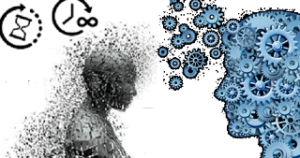 em que ponto a ontologia se distancia do racionalismo cartesiano, em que ponto se aproxima, para quem deseja um mergulho mais profundo “Meditações Cartesianas” é muito recomendável (post), já quem Husserl foi professor de Heidegger e este guardou alguns conceitos.
em que ponto a ontologia se distancia do racionalismo cartesiano, em que ponto se aproxima, para quem deseja um mergulho mais profundo “Meditações Cartesianas” é muito recomendável (post), já quem Husserl foi professor de Heidegger e este guardou alguns conceitos.
As duas categorias cartesianas bem conhecidas para “coisa” são a res extensa e a res cogitans, sobre as quais escreveu Heidegger: “Sem dúvida esse ente [com relação a Deus] necessita de produção e conservação, mas dentro dos entes criados [ou só considerando estes] … existe algo que não necessita de outro ente, no tocante a produção e conservação das criaturas, por exemplo do homem. Tais substâncias são duas: o res cogitans e o res extensa” (Heidegger, 2015, p. 144).
Assim o dualismo cartesiano não é só entre duas substâncias finitas, que são naturalmente distintas, mas entre as duas finitas e o infinito, e Heidegger esclarece logo a seguir retomando a ontologia medieval, as vezes chamada de fundamental ou ontoteologia por outros autores, a questão de como o ser é designado como “ente cada vez referido” (Heidegger, 2015,p. 145), ou seja, “nas afirmações Deus é ou o mundo é, predicamos o ser … a palavra ´é´ não pode indicar o ente cada vez referido no mesmo sentido (αυυωυúς, unívoce), já que entre ambos existe uma diferença infinita do ser, se a significação do ´é´ fosse unívoca, então o criado teria o mesmo sentido do não criado ou o não criado seria rebaixado a um criado” (idem).
Resolve a querela do universal, entre realistas e nominalistas, “Ser não desempenha a função de um simples nome [pensavam os nominalistas] pois em ambos casos compreende-se ´ser´ “ (ibidem), explicita e supera a escolástica que “apreende o sentido positivo de significação do ´ser´ como significação ”analógica” para distingui-la da significação unívoca ou meramente sinônima” (ibidem).
As aspas são do próprio Heidegger para indicar a analogia do ser enquanto substância, e estendendo para o contemporaneidade nem o analógico nem digital são ser, pertencem só ao ôntico, ou em nossa denominação aos artefactos.
Finalmente rebaixa a ontologia cartesiana que “fica muito aquém da escolástica” que deixou sem discussão o sentido do ser e o caráter da ´universalidade´ desse significado contido na ideia da substancialidade” (ibidem), embora reconheça que mesmo a ontologia medieval questionou muito pouco este sentido.
Embora vá recuperar em alguns aspectos Descartes, constata para o seu tempo e vale ainda hoje, sequer nos libertamos da crise do pensamento europeu do século passado, “a ontologia cartesiana do mundo ainda é hoje vigente em seus princípios fundamentais”, a materialidade.
Heidegger, M. Ser e tempo, 10a. edição, Trad. Revisada de Marcia Sá Cavalcante, Bragança Paulista, SP: Editora Universitária São Francisco, 2015.

